Mud tires are considered the most convenient for off-roading on all sorts of tracks, even the steep and unlevelled ones, too, due to their features. Mud tires are designed using specific materials to get the best results from their ride. It is often discussed that hydroplaning is not a big deal with mud tires, but the truth is something else. Can you hydroplane with mud tires?
Mud tires are more prone to hydroplaning because of their tread block patterns. Tread blocks are the spaces between the treads of tires, which help clear out the mud and water from them. Mud tires fail in doing so and can raise the car. So, you can definitely hydroplane with mud tires.
Hydroplaning involves sliding on top of a film of water between the vehicle’s tires and the road. It results in the loss of steering capabilities and braking effectiveness.
Whenever a person drives on a wet road, there are chances for water displacement underneath them. It results in loss of contact with the road.
M/T tires generally have large lugs without siping, and their layout isn’t the greatest for channeling water. The problem is exacerbated by wider tread width, something difficult to avoid with a tire 35″ in diameter.
The chances of hydroplaning also increase when a person drives over 45 mph on roads having a water depth of 1/10″. Hydroplaning can occur on any wet road or surface, so many wet roads are potential hydroplaning zones.
Reason Behind Hydroplaning:
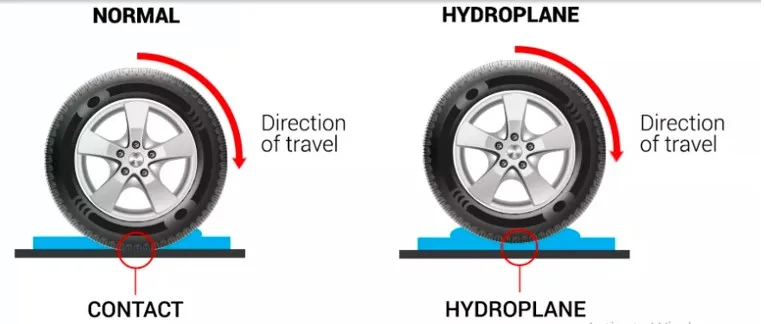
It is said that the first 10 minutes of the rainy day are the most dangerous as hydroplaning usually occurs on wet roads and surfaces.
Slippery condition is created when light rain mix-ups with the oil residue seen on the road’s surface. It can cause the vehicles to hydroplane and is a deadly combination for drivers. The chances of accidents increase during poor weather conditions, including fog, rain, ice, and snow.
Methods for Avoiding Hydroplaning:
| Ensure adequate tread depth on your tires | Check the tread depth specifically in worn out tires as they have less tread depth. It means they don’t have deep channels which are needed to move the water away in an effective way. This cause the tire to ride on top of water easily and such thing don’t provide traction. |
| Reduce the speed | It is recommended to slow down the speed even if the tires are new or not. Tires always hydroplane at a certain speed and at faster speed less time is given to tire to channel away water. It is considered dangerous to drive immediately after it starts raining so driver should slow down the speed. The surface of the road is mixed with oil and rubber of tire and creates a slicker surface. |
| Avoid cruise control | It is advisable not to use cruise control in inclement weather. A driver might need an instant control of the speed with a change in direction. |
| Drive in the tracks of vehicle | It is recommended to follow the tracks of the car which is in front of you. It allows a driver to drive on strips of road where amount of water is dispersed by the previous vehicle. It means that less water will be required by the tires for navigating. |
| Avoid puddles | It is best to stay out of puddles as only a small layer of water is required for the vehicle to hydroplane. You are more likely to hydroplane if it rains longer and it causes deep puddles. |
Are Mud Tires Good in Rain?
When it comes to choosing the mud tires for our vehicles, we know that there are no tires made that are considered perfect in every aspect.
That is why people who drive race cars or sports cars would always prefer to change their tires whenever the rain season comes up. Therefore, when it comes to driving a vehicle in the rain, there are specific characteristics that a person should have to look at the tire before choosing to buy it.
It is seen that most mud-terrain tires are unable to perform well in weathers of rain and on wet surfaces and roads.
The reason is that the tread blocks of the mud tires are so prominently increased with wider channels leaving so much space without any dedicated ribs or grooves that they can't expel water like even the most basic all-season street tire can.
The mud-terrain tires are not considered the best tires for driving vehicles in the rain. However, it is also a fact that they are not considered the worst consumer choice either.
It is seen that certain mud tires are prone to aqua planning, which can come out to be dangerous in rainy seasons. If we talk about the choice of tires, then we would say that all-season tires should be preferred over the mud tires in rainy seasons.
Another essential consideration for choosing the type of tires a person should install in their vehicle for hydroplaning is the tread depth. With gradual use of the tires, the tires’ tread depth gets reduced with time.
When it comes to less tread depth of the tire, there is less space in the tire to store water to maneuver properly over the terrains. It means that in the rainy season, the mud tires act as slicks on wet terrains.
The Best Mud Tires to Prevent Hydroplaning:
Hydroplaning is a function of tire footprint. A tire with a broader tread would easily hydroplane in wet terrains and surfaces. On the other hand, a tire with less width would not hydroplane over wet surfaces.
Also, it is said by experts that it does not matter how good or new the conditions of the tires are. The tires would always hydroplane on the roads at a certain speed, irrespective of being brand new in the state.
The best condition to avoid hydroplaning in vehicles is to continually monitor the tire pressure and the state of the tires regularly to prevent mishaps.
Other than this, the tires which are best to avoid hydroplaning are mainly all-weather tires. There is a list of some of the best recommended all-weather tires, which may prove to be helpful for the reader. The best tires which prevent hydroplaning are as follows:
- Good year assurance weather-ready
- Michelin Pilot sport A/S 3+
- Bridgestone Blizzak WS90
- Pirelli P4 Four season plus
- Continental Extreme Contact Sport
1. Good Year Assurance Weather-Ready:
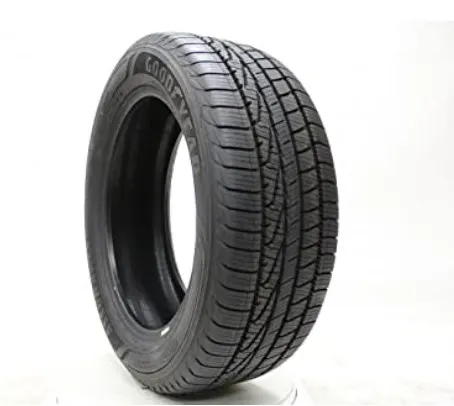
Specific Features:
- This mud tire is considered best for grand touring vehicles and is equipped with a worthy-free grip in snow and ice.
- It also has a reactive weather technology with evolving traction grooves, and the tread of this tire is made of soy-based rubber compound.
- These tires provide the best-wet traction having an asymmetrical tread pattern that facilitates the tire’s performance on damp roads. It also encourages the durability of long touring sessions.
- These tires include wide belts made from steel, aiding the tread area to respond more acutely and helping in utilizing the vehicle handling the rainy season. However, these tires are still not considered the best one for heavy rain season due to their circumferential channels, which cannot prevent hydroplaning.
| Pros | Cons |
|---|---|
| These tires provide comfort for the long-distance rides | These tires are not considered best one for heavy rain |
| These tires aid in handling response | |
| These tires provide a good wet traction on roads. |
2. Michelin Pilot sport A/S 3+:
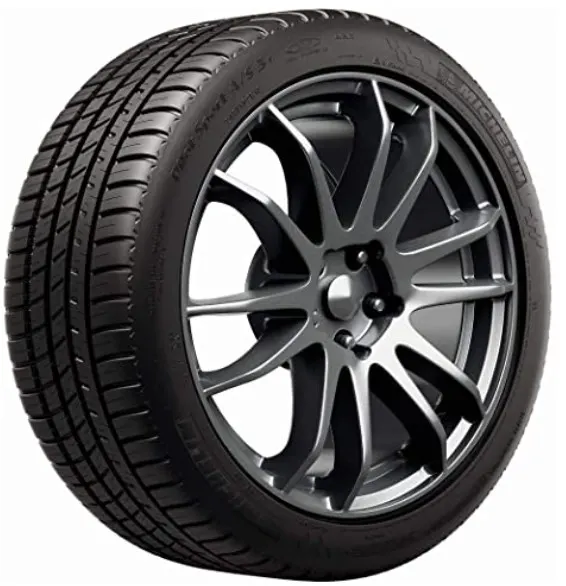
Specific Features:
- These tires hold the feature of extreme silica technology and provide an ultimate all-season wet grip on wet roads too.
- These tires hold an asymmetrical tread pattern with a more aggressive design and maintain a stable contact on the slippery road even at high speed.
- The internal constructions of tires include a pair of high-tensile cord belts wrapped around by a polyamide cord. These provide more comfort and durability during the overall performance of tires.
- One of the downsides of these tires is that they produce loud noise whenever the driver drives the car at spirited acceleration.
| Pros | Cons |
|---|---|
| These tires provide high-speed durability | These tires produce a squealing noise which is quite irritating sometimes |
| These tires provide comfortable handling | These tires are a bit pricey as compared to other brands |
| These tires increase wet traction even at high speed |
3. Bridgestone Blizzak WS90:
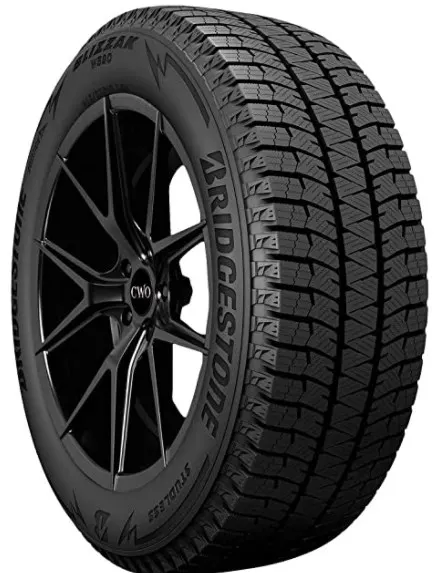
Specific Features:
- These tires are excellent for snow traction and braking on ice.
- They hold symmetric tread patterns with a contact area of 25 square inches and multiple block edges. These help deal with rainy weather and provide a better grip on a slippery road of ice.
- These tires have advanced tread compounds, which include multiple bite particles too. Other than this, they have a key element of removing the water layer between icy roads and tire tread, which can increase the vehicle’s contact on slippery and icy surfaces.
- But still, these tires can lose traction even at slow speeds due to more slippery conditions.
| Pros | Cons |
|---|---|
| These tires provide a large contact area for more traction | These tires can lose their traction when the road changes |
| These tires provide an amazing grip on icy roads | |
| These tires can remove the slippery water layer on the tread rubber |
4. Pirelli P4 Four Season Plus:
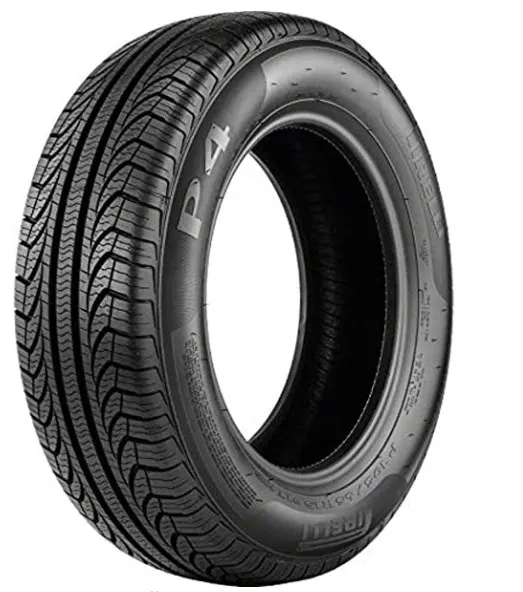
Specific Features:
- These tires are considered best for warm climates holding silica-rich tread compounds. They are considered perfect for all-season traction and handling.
- These tires have advanced tread compounds which can tackle both dry and wet conditions and allow safe and comfortable in any weather.
- These tires have a symmetric tread feature with interlocking sipes and silica-based rubber compounds, which also offer precise handling on dry roads.
- These tires include a pair of circumferential grooves and lateral grooves, which let the water escape through and prevent hydroplaning during heavy rain.
- These tires might provide a stiff and rough ride at first use, but once a driver gets familiar with them, they are best to use.
| Pros | Cons |
|---|---|
| These tires provide comfortable drives on dry roads | These tires are stiff when they are used as new |
| These tires prevent from hydroplaning | |
| These tires provide a good grip on slippery roads and accurate handling too |
5. Continental Extreme Contact Sport:
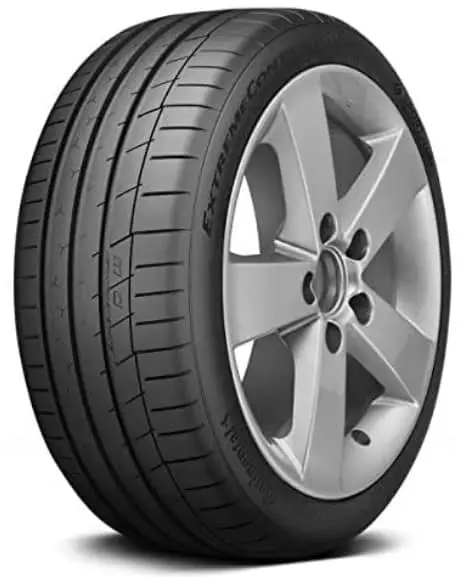
Specific Features:
- These tires are the best highway tires and hold the specific feature of dry and wet traction braking and acceleration.
- These tires have asymmetrical tire tread with an extreme cornering grip and stability.
- The tread compound of these tires is divided into five to six ribs having a load capacity of more than 1700 pounds. It allows the vehicle to handle heavier trucks and SUVs efficiently on the highway.
- The Tread portion of these tires distributes equal pressure on roads and is highly responsive for handling large vehicles.
- The downside of these tires is that they are not the best option for hydroplaning resistance due to their hollow circumferential groove design.
| Pros | Cons |
|---|---|
| These tires can handle heavy loads | These tires are not suitable for flooded roads |
| These tires offer stability even at high speed | |
| These tires offer high-speed handling response and a long-lasting tread life |
Also Read:
Do Mud Tires Affect Gas Mileage?
Do Mud Tires Cause Steering Wheel Shake?
Frequently Asked Questions (FAQs):
Are the mud tires considered suitable for the rainy season?
It is observed that mud tires usually don’t perform well in the rain and on wet pavement. The reason behind this is the pronounced tread blocks and wide channels leaving so much space.
Can we use mud tires on highway places?
Mud tires are considered street-legal tires that can be driven on the road, especially while traveling at highway speeds. It still doesn’t mean that it is the best option as better results can be seen with all-terrain tires.
Which tires show the feature of hydroplaning?
It is said that the tire that has a broader footprint tends to hydroplane the most. Low-profile tires are wide hydroplanes more readily in daily use.
Are mud tires considered harmful to be used in daily routine?
Mud tires are not bad for everyday use and can be legally used on the road. There are no specific and general rules regarding the usage of mud tires, but still, it is not a definite idea to use them on roads.
Why are mud tires considered harmful in the snow?
Mud tires are less capable in snow as compared to other all-terrain tires. The wide channels between the tread blocks are filled with ice and snow, hindering their movement. Mud tires also lack siping, which is seen on regular all-season tires to grab the road surface.
Is it possible to hydroplane with new tires?
Yes, new tires can hydroplane, too, if there is enough water and speed. New tires hold deeper treads for channeling away the moisture from tires.
How fast should a person have to be going to hydroplane?
Water cannot be moved fast enough as the speed increases. Tire starts to ride upon the layer of water, and partial hydroplaning is observed at about 35 miles per hour. The speed is increased until around 55 MPH, after which the tire may lose its contact with the pavement.
Does a person need snow chains on mud tires?
Snow chains are known to provide maximum traction. At some highways, signboards mention that chain is required, and mud and snow tires are allowed.
Can a person put snow chains on mud tires?
Chains are best suited for mud tires, especially HD ones with a more significant link size. Any set of genuine chains can do wonders in mud tires, not specifically the traction ones.
Is it necessary to have chains with mud-terrain tires?
The chains associated with mud tires on vehicles provide the required traction for keeping you on the road. Tires chains break up the wedge, and tires remain in contact with the road.
Do the new tires prevent hydroplaning?
Hydroplaning is seen when the tires cannot maintain road contact. The tire fails to move away from the water through tread patterns. New tires on the rear will help maintain vehicle control on wet roads.

This is Surya. I am an experienced off-roader. I have been off-roading for many years across several terrains. I am passionate about 4×4 driving and want to share my knowledge and experience with others.
My goal is to provide you with the most comprehensive and unbiased information about off-roading.
I curated this article through my personal experience and expertise, and I hope it helps you with what you are looking for.

 (+91)9123743026
(+91)9123743026
 24/1 Nibedita Sarani. M.B. Road, Kolkata- 700051, India
24/1 Nibedita Sarani. M.B. Road, Kolkata- 700051, India
Do Off-Road Tires Wear Faster? All You Need to Know – Off-Road Handbook
Monday 21st of March 2022
[…] where they can grip the surface and provide traction. On paved roads, they can cause the vehicle to hydroplane and lose traction. As a result, they may wear more quickly on paved roads than regular […]
Can You Off-Road with Street Tires? All You Need to Know – Off-Road Handbook
Wednesday 2nd of March 2022
[…] grip in slippery conditions and also has extra safety features like deeper treads to prevent hydroplaning by channeling water through the […]
Do Mud Tires Ride Rough? All You Need to Know – Off-Road Handbook
Monday 14th of February 2022
[…] Can You Hydroplane with Mud Tires? […]